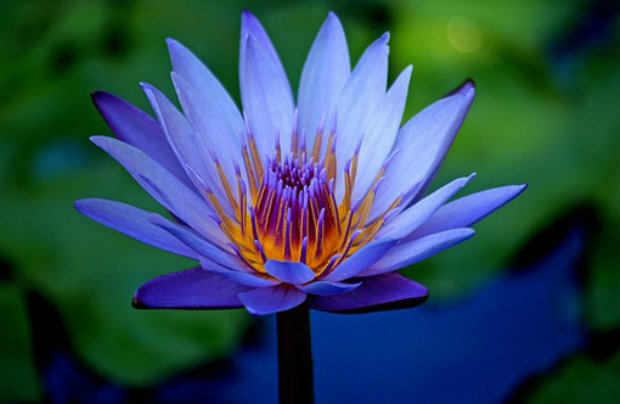Instead of a Nap, Nidra! – Yoga Nidra March 7th
Yoga Nidra
with Yoga BETH
Thursday, March 7, 2013 @ 5:30pm
Mongoose Jct. Yoga Center
$15 – bring pillow & blanket
drop ins welcome!
www.yoga-beth.blogspot.com 340/643-6467
Yoga nidra is yoga without movement. Yoga nidra relaxes the body and the mind. It allows you to completely unwind and get in touch with your inner self. The benefits of yoga nidra are far reaching, and can be different for everyone. Yoga nidra is an ancient practice that is also referred to as yogic sleep or sleep with awareness that is done in a comfortable lying position. The goal of yoga nidra is full body relaxation and a deep meditative state that addresses physiological, neurological and subconscious needs using techniques including guided imagery, breathing, meditation, concentration and body scanning. The biggest benefit of yoga nidra is that anyone can do it. It doesn’t involve physical expertise of any kind so even if you have a health condition, you can practice yoga nidra. Yoga nidra helps to quiet the overactive mind, promotes better sleep, eases anxiety and calms stress.
Explore the 10 Steps of Yoga Nidra
Unless you are an experienced practitioner of yoga nidra, a guide is needed to lead you through the experience at a relaxing and beneficial pace. Beth Escardo is a certified nidra teacher. If you attend a session with her, you will be expertly led through the following ten stages.
Getting Started: Set up your practice space by placing a bolster lengthwise on your mat and slipping a block under the top end, so that the bolster slants gently. Lie down with your sitting bones on the mat and with the bolster supporting you from the low back to the head. Place a folded blanket under your head for a pillow. Notice and welcome sounds, smells, and taste as well as color and light. Release excess tension throughout your body and feel a sense of relaxation spreading throughout your entire body and mind.
1. Connect to Your Heartfelt Desire. Bring to mind your heart’s deepest desire—something that you want more than anything else in life. Perhaps it is a desire for health, well-being, or awakening. Feel this heartfelt desire with your entire body while imagining and experiencing it in this moment as if it were true.
2. Set an Intention. Reflect on your intention for your practice today. It might be to relax and rest, or to inquire into a particular sensation, emotion, or belief. Whatever your intention, welcome and affirm it with your entire body and mind.
3. Find Your Inner Resource. Bring attention to your Inner Resource, a safe haven within your body where you experience feelings of security, well-being, and calm. You may imagine a place, person, or experience that helps you feel secure and at ease and that helps you feel within your body the sense of well-being. Re-experience your Inner Resource at any time during your practice or in daily life when you feel overwhelmed by an emotion, thought, or life circumstance and wish to feel secure and at ease.
4. Scan Your Body. Gradually move your awareness through your body. Sense your jaw, mouth, ears, nose, and eyes. Sense your forehead, scalp, neck, and the inside of your throat. Scan your attention through your left arm and left palm, your right arm and right palm, and then both arms and hands simultaneously. Sense your torso, pelvis, and sacrum. Experience sensation in your left hip, leg, and foot, and then in your right hip, leg, and foot. Sense your entire body as a field of radiant sensation.
5. Become Aware of Your Breath. Sense the body breathing by itself. Observe the natural flow of air in the nostrils, throat, and rib cage as well as the rise and fall of the abdomen with each breath. Feel each breath as flowing energy coursing throughout your entire body.
6. Welcome Your Feelings. Without judging or trying to change anything, welcome the sensations (such as heaviness, tension, or warmth) and emotions (such as sadness, anger, or worry) that are present in your body and mind. Also notice opposite sensations and emotions: If you feel worry, call up feelings of serenity; if you feel tense, experience ease. Sense each feeling and its opposite within your body.
7. Witness Your Thoughts. Notice and welcome the thoughts, memories, and images that are present in your mind. Observe your thoughts without judging them or trying to change them. As you come upon beliefs that you hold about yourself, also bring to mind and experience their opposites, welcoming your experience just as it is.
8. Experience Joy. Welcome sensations of joy, well-being, or bliss emanating from your heart or belly and spreading throughout your body and into the space around you. With every exhalation, experience sensations of warmth, joy, and well-being radiating throughout your body.
9. Observe Your Self. Be aware of your sense of “I-ness,” or personality. Notice this sense of identity when you say “I’m hungry,” “I’m angry,” or “I’m happy.” Then, experience yourself as an observing witness or Awareness that is cognizant of these feelings. Set aside thinking and dissolve into Awareness, awake and conscious of the self.
10. Reflect on Your Practice. As you complete your practice, reflect on the journey you’ve just taken. Affirm how the feeling of pure Being, or pure Awareness, is always present as a deep, unchanging peace that underlies every changing circumstance. Imagine integrating that feeling into your everyday life, in both pleasant and difficult moments, and always reconnecting to that sense of equanimity.
To Finish: At your own pace, transition back to your waking life, reorienting to your surroundings. Come back slowly, and pause for a moment to feel grateful for taking this time for yourself.



